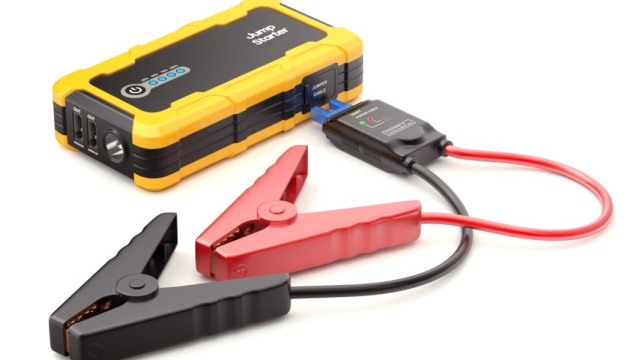Are you tired of feeling frustrated and helpless when it comes to changing a flat tire? Look no further! In this article, we will unlock the secrets to mastering the art of flat tire changes, empowering you to tackle this common roadside issue with confidence and ease. Whether you’re a seasoned driver or new to the world of automobiles, we’ve got you covered. No more panicking or relying on expensive towing services – with our step-by-step guide, you’ll be back on the road in no time. So, let’s dive right in and learn how to conquer the flat tire challenge once and for all. Get ready to become a pro at handling unexpected mishaps on the road!
Understanding the Basics of Flat Tire Changes
Changing a flat tire is an essential skill that every car owner should have. When faced with this frustrating situation, knowing how to handle it efficiently can save you time, money, and the hassle of waiting for roadside assistance. In this section, we will explore the fundamental steps of changing a flat tire, empowering you to master this art and regain control over unexpected roadside challenges.
Firstly, finding a safe location to perform the tire change is crucial. Move your vehicle to a level and stable surface away from traffic, ensuring the parking brake is engaged. This simple precaution will prevent any accidents and provide a secure environment for the tire change process.
Next, equip yourself with the necessary tools. These typically include a spare tire, jack, lug wrench, and a vehicle owner’s manual for specific instructions. Double-checking that these items are readily accessible in your car can spare you from additional frustration and wasted time during the tire change.
Now, it’s time to get down to business. Start by loosening the lug nuts on the flat tire, but do not remove them entirely just yet. Applying force using the lug wrench in a counterclockwise direction should do the trick. Remember, lefty-loosey, righty-tighty! Once the lug nuts are loosened, you’re ready to jack up the car.
Remember, safely positioning the jack is essential to avoid any accidents or damages. Consult your vehicle owner’s manual for precise instructions on where to place the jack to lift the car effectively. Once the car is elevated, remove the loosened lug nuts completely and carefully take off the flat tire.
Congratulations on successfully completing the first steps of changing a flat tire! In the next section, we will dive deeper into the process, providing you with additional tips and tricks to ensure a seamless tire change experience. Stay tuned for more insights on how to handle common car emergencies and make the most out of the valuable knowledge you gain here.
2. Essential Tools and Safety Precautions
In order to successfully change a flat tire, it is crucial to have the necessary tools and take certain safety precautions. Here are the essential items you’ll need and some important safety tips to keep in mind.
The first tool you’ll need is a spare tire. Make sure it is properly inflated and in good condition before attempting to change the flat tire. Additionally, having a jack that is suitable for your vehicle is essential. Familiarize yourself with the location and proper use of the jack in your car before an emergency occurs.
Next, you’ll need a lug wrench or a tire iron to loosen the lug nuts. This tool allows you to easily remove the flat tire and secure the spare tire once it’s in place. It’s important to ensure that the lug wrench or tire iron fits the size of your lug nuts to avoid any complications during the process.
Safety should always be a top priority when changing a flat tire. Start by finding a safe location away from traffic, ideally on a flat and level surface. Turn on your hazard lights to alert other drivers of your presence. Apply the parking brake and place wheel chocks or blocks behind the tires to prevent any accidental rolling.
Never forget to use caution when lifting your vehicle with the jack. Follow the instructions provided by the manufacturer to avoid any potential injuries. Once the car is lifted, place jack stands or similar supports under the vehicle for added stability. This is an important safety measure that should never be skipped.
By having the necessary tools and adhering to the recommended safety precautions, you’ll be well-prepared to handle a flat tire. However, if you find yourself in a challenging situation or unable to change the tire on your own, don’t hesitate to contact "Rick’s Emergency Roadside Assistance." They are your trusted partner for 24/7 towing and roadside services in Chicago, providing help with flat tire changes, car jump starts, car lockouts, and reliable towing when needed.
3. Step-by-Step Guide for Changing a Flat Tire
First, make sure you park your vehicle in a safe location away from traffic. This will help ensure your safety while you work on changing the flat tire. Make sure to turn on your hazard lights, as they will alert other drivers to your presence.
Next, locate your vehicle’s jack, spare tire, and lug wrench. These are the tools you’ll need to successfully change your flat tire. The jack is usually stored in the trunk or underneath the car. The lug wrench is used to loosen and tighten the lug nuts that hold the tire in place.
Once you have the necessary tools, proceed to loosen the lug nuts on the flat tire. Use the lug wrench to turn the nuts counterclockwise, but don’t remove them just yet. Loosening them now will make it easier to fully remove them once the vehicle is raised.
After the lug nuts are loosened, it’s time to lift the vehicle using the jack. Find the designated jack points on your car, which are often located near the wheels. Place the jack securely under the vehicle and begin pumping the handle until the flat tire is completely off the ground.
Now that the vehicle is elevated, go ahead and remove the lug nuts completely. Set them aside in a safe place where they won’t get lost. With the nuts removed, firmly grip the flat tire with both hands and pull it straight toward you. Place it on the ground, making sure it won’t roll away.
Finally, it’s time to put on the spare tire. Line up the holes in the spare tire with the wheel bolts, then push it onto the bolts until it fits snugly against the wheel hub. Once in place, screw the lug nuts back on, turning them clockwise by hand as much as possible. Use the lug wrench to tighten them further, but be careful not to overtighten.
To finish, lower the vehicle carefully using the jack. Remove the jack from under the car and give each lug nut a final tightening. Double-check that all lug nuts are secure before driving. Remember, the spare tire is only intended for temporary use, so make sure to visit a tire shop soon to get a proper replacement.
That concludes our step-by-step guide for changing a flat tire. By following these instructions, you’ll be able to handle this frustrating situation with confidence. Remember, if you find yourself in need of assistance, "Rick’s Emergency Roadside Assistance" is your trusted partner for 24/7 towing and roadside services in Chicago.







